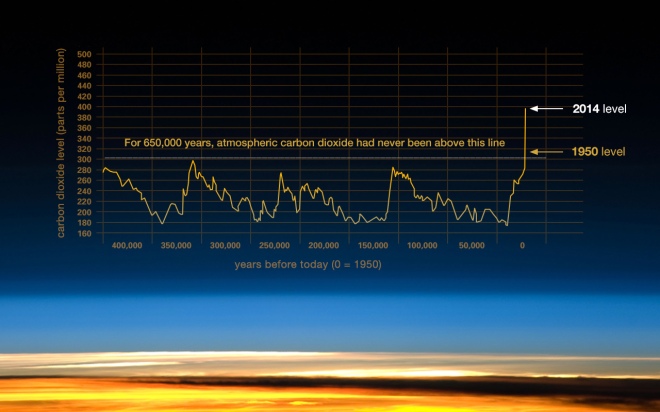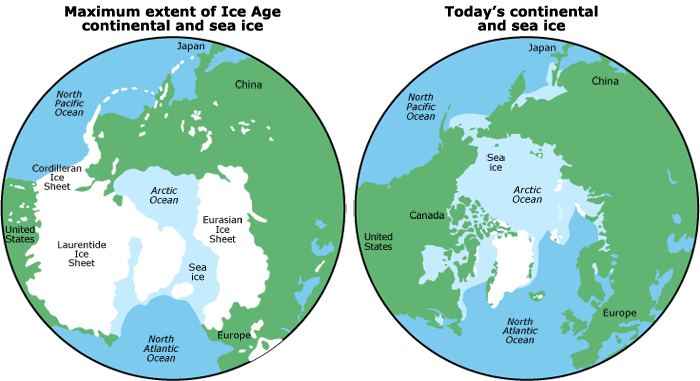Carbon Dioxide in the Air - Evidence from the Ice
Ice cores are cylinders of ice drilled out of an ice sheet or glacier.

Most ice core records come from Antarctica and Greenland.
The longest ice cores are 3km deep.
The oldest continuous ice core records extend 123,000 years in Greenland and 800,000 years in Antarctica.
Ice cores contain information about past temperature, and about many other aspects of the environment.
The ice encloses small bubbles of air that contain a sample of the atmosphere that existed in the past.
This makes it possible to measure the past concentration of gases (including carbon dioxide and methane) in the atmosphere.

The graph shows how carbon dioxide has increased and decreased over hundreds of thousands of years.
The low readings match with times called 'glacial stages'.
During glacial stages, ice covered large areas of the Earth.
The peaks in the graph show times when carbon dioxide was high, matching times called 'interglacial stages'.
The most recent glacial stage occurred between about 120,000 and 11,500 years ago.

Since then, the Earth has been in an interglacial period called the Holocene.
During glacial stages, CO2 levels were around 200 parts per million (ppm).
During the warmer interglacial periods, they hovered around 280 ppm.
In 2013, CO2 levels passed 400 ppm for the first time in recorded history.
This rise in CO2 is caused by burning fossil fuels.

Most ice core records come from Antarctica and Greenland.
The longest ice cores are 3km deep.
The oldest continuous ice core records extend 123,000 years in Greenland and 800,000 years in Antarctica.
Ice cores contain information about past temperature, and about many other aspects of the environment.
The ice encloses small bubbles of air that contain a sample of the atmosphere that existed in the past.
This makes it possible to measure the past concentration of gases (including carbon dioxide and methane) in the atmosphere.

The graph shows how carbon dioxide has increased and decreased over hundreds of thousands of years.
The low readings match with times called 'glacial stages'.
During glacial stages, ice covered large areas of the Earth.
The peaks in the graph show times when carbon dioxide was high, matching times called 'interglacial stages'.
The most recent glacial stage occurred between about 120,000 and 11,500 years ago.

Since then, the Earth has been in an interglacial period called the Holocene.
During glacial stages, CO2 levels were around 200 parts per million (ppm).
During the warmer interglacial periods, they hovered around 280 ppm.
In 2013, CO2 levels passed 400 ppm for the first time in recorded history.
This rise in CO2 is caused by burning fossil fuels.